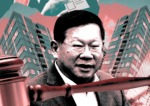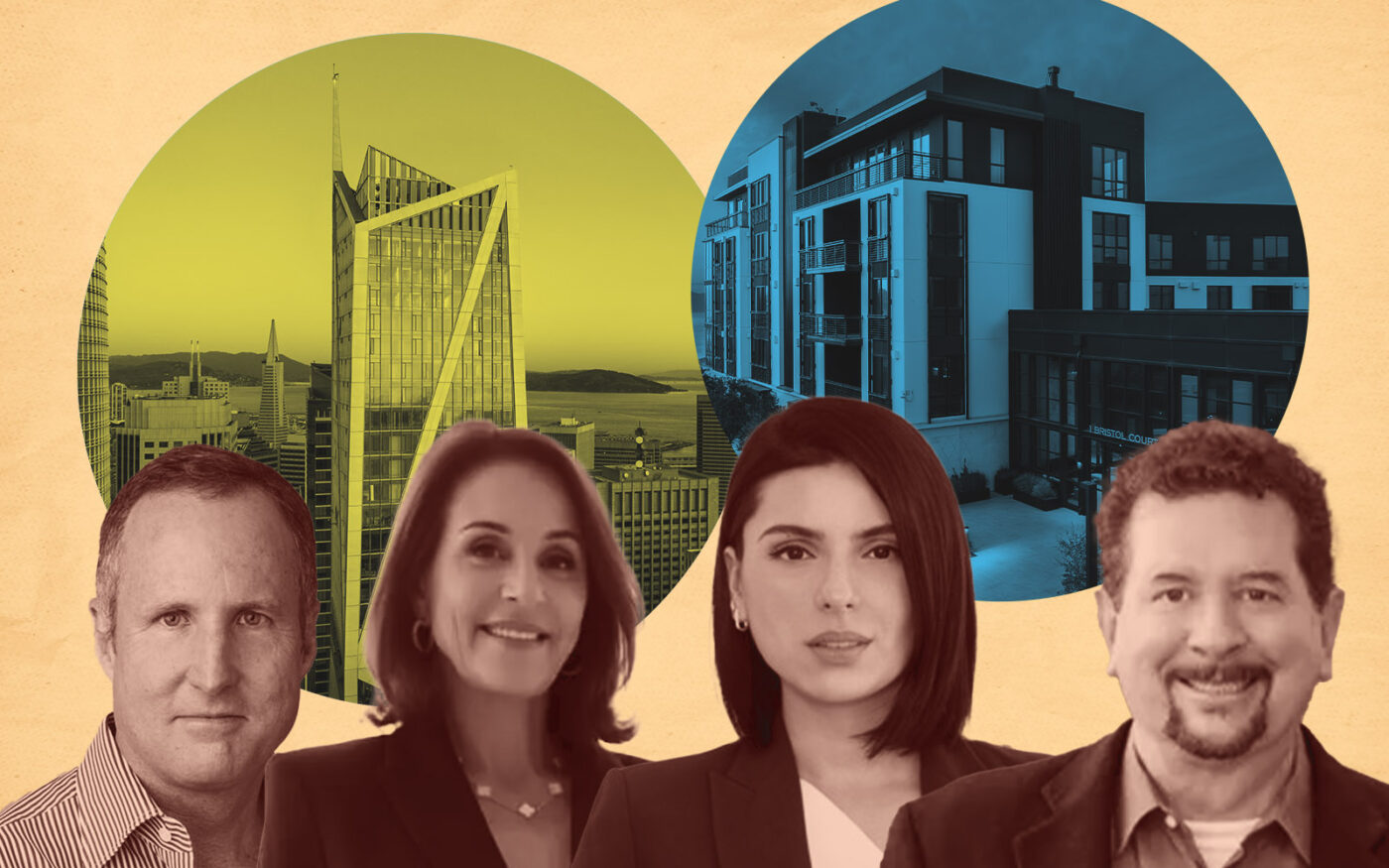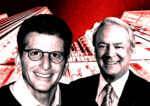 Bidders buy San Jose condos at low prices, but was auction legitimate?
Bidders buy San Jose condos at low prices, but was auction legitimate?
Trending
Demand rebounds in SF condo market as pricing meets the market
Buyers come back with a premium on units outside of downtown

Interest has ticked up in the San Francisco condo market, especially outside of the downtown core. The upswing in demand started late last year as interest rates came down, agents and developers say, and has continued this spring as tech buyers returning to the office are making deals with sellers who have come to terms with the drop in price required to close deals in the current market.
“Sellers that really want to sell have realized that prices have rolled back about five to seven years from the height in 2021,” said Robyn Kaufman of SF High Rises Real Estate, who specializes in Rincon Hill and surrounding SoMa neighborhoods.
Some sellers have dropped their prices from $1,500 per square foot at the height of the market to less than $1,000 as demand downtown dried up, she said. Kaufman has turned down potential listings if the sellers don’t seem to grasp the new reality since the combination of the pandemic, subsequent embrace of remote work and rising interest rates brought the condo market to a near standstill starting in mid-2022.
Tim Gullicksen at Corcoran Icon said he helped a client close a deal last year along the central waterfront on a condo that had already gone through two price cuts. She ended up paying $200,000 less than the sellers had when they bought the unit six years ago.
He has sold San Francisco real estate through the dot-com crash, the financial crisis and now the aftermath of the pandemic. In each case, he said, downtown condos were the first to get hit and the last to recover.
“The hierarchy of desirability is very clear, in San Francisco at least, that highrises are sort of the low man on the totem pole,” he said.
“Savvy buyer mindset”
Gullicksen points out the difference between entry-level $1 million to $2 million condos in cookie-cutter buildings, and the ultra luxury high end with bay views and top-notch amenities, which is “it’s own thing,” he said.
But even on the higher end, there are deals to be had, perhaps less on pricing but more on the back end. One of his clients bought a $4.5 million view condo in a luxury development that included $100,000 in design upgrades. The developer paid the transfer tax as well.
Another sales team in a new building made it clear to him that everything but the price was very negotiable.
““You want to throw in those window treatments? You want to throw in a washer-dryer? You want to throw in closing costs? Just tell us what you need to make the deal happen,’” he said of their pitch.
Kaufman estimates buyers in new developments can get about 3 to 5 percent of the purchase price back in credits towards design upgrades or HOA dues. She said the luxury market in particular was impacted by the hit to San Francisco’s reputation, “some of it real, some of it not, but it’s out there.”
Prices are down across all condo building types, according to a recent report from Polaris, but highrises, which are also the most expensive product, have taken the biggest hit. The average price per square foot in March was just over $1,300, a year-over-year drop of 8.4 percent.
At ultra-luxury highrise 181 Fremont Street, the asking price of the half-floor penthouses on the 68th story went from more than $4,700 per square foot to under $4,000 in March. Compass agent Carmen Legarda, the building’s sales director, said the new price came from “thorough analysis and strategic discussions with our developer team” that “reflects our commitment to adapting to market dynamics while ensuring the best value for our clients.”
She said that each sale in the building is unique, but the team was able to close three “notable” deals at more than $2,000 per square foot in the first quarter due to a combination of price adjustments and incentives like HOA fees and design upgrades. Today’s buyers want move-in ready and even fully furnished, she said, and they’re getting it.
“It’s indicative of a savvy buyer mindset, capitalizing on the current market,” she said.
The Bristol on Yerba Buena Island doesn’t really offer design upgrades as an incentive because the units are “complete homes” as is, said developer Chris Meany of Wilson Meany. But the sales team at the 124-unit condo building is “super aggressive about meeting the market” when it comes to pricing and is constantly checking comps at other luxury condo developments in the market.
“People who are shopping us are shopping the other best buildings in the city,” he said.
The Bristol did have a rate buy-down program that effectively dropped interest rates as low as 5 percent, but that ended in January. No new promotion has started since, according to a rep.
Prices down, demand up
All agents and developers interviewed for this story said they noticed an uptick in demand during the latter half of last year that has continued to pick up speed this spring. More realistic pricing is one reason, they say, as well as the drop in interest rates and the return to office for some tech workers.
The months of remaining inventory was down slightly to 4.7 months in March, according to Polaris, compared with 5 months one year ago and 5.5 months in 2022. That may be because the development pipeline is drying up, with only 89 new condos delivered in all of 2023, the lowest since 2011 in the aftermath of the financial crisis.
New construction sales were well below the 10-year average of 45 per month with just 21 units sold in March. But pending condo resales hit their highest point in more than a year at 254, about 20 more per month than the 10-year average.
Given the impact that higher interest rates have had on the market, it’s no surprise that cash buyers are on the rise. All-cash purchases are up by one-third over last year, according to Polaris, and represented more than 35 percent of all transactions for the three months ending Feb. 29. But investment buyers are also up more than 20 percent compared to last year, and make up nearly one-quarter of all condo buyers, an indication that some are betting the market may have found its bottom.
There’s also a sense that San Francisco as a whole could soon turn a corner. The new political activism from the city’s more business-friendly moderate groups has provided comfort to luxury buyers, Kaufman said, as has the new district attorney and an emphasis from the mayor on clean and safe streets.
““The people that actually know San Francisco that are walking around, you can see the changes on the street,” she said, though she added that private security and a manned front desk are must-have amenities for many downtown buyers.
Even as high-profile retailers like Macy’s may shut their doors, others are opening, she said, buoyed by the idea that the city is coming back to life, with AI companies on the increase and most employers requiring some time in the office.
“Buyer sentiment regarding downtown living has notably evolved this year compared to last,” Legarda said, crediting return-to-work policies for “injecting a renewed sense of energy.”
Happy hours are filling up again, she said, and Salesforce Park and the East Cut Crossing are experiencing more foot traffic, bringing back the “bustling San Francisco energy downtown is known for.”
Downtown versus neighborhoods
While downtown may be more appealing today than at any time since the pandemic, many condo buyers put a premium on properties outside the city’s core.
In the first quarter of this year, condo prices were up 3.5 percent citywide compared to last year, according to Compass data. But prices were significantly higher in condos outside of downtown. Downtown/SoMa condos traded around $1 million in the three-month rolling average ending in March, while those outside downtown averaged just under $1.3 million.
There are a few reasons for this preference, according to Gullicksen, who said none of his current clients are looking downtown. First is the perception that the area is still “dreadful and boring and empty,” he said, compared to the lively commercial corridors in the neighborhoods.
Plus, people who want to live in San Francisco may be predisposed to prioritize charm and quirkiness instead of a clean modern look and the newest amenities, he said, which often come with hefty HOAs.
“They’re always building new buildings, so how is yours going to be a good investment when it comes time?” he said. “And why do I pay $1,400 a month in HOAs? Because there’s a dog washing station in the basement? A vast majority of my clients don’t feel like that’s a worthwhile use of their money.”
As a highrise enthusiast, Kaufman has heard the charm critique of downtown buildings before, but thinks people often don’t realize that quirkiness has its price too.
“The charm of the older buildings is all on the outside, because on the inside you smell everybody’s cooking and you hear everybody walking around,” she said. “It’s an excellent argument [for new construction], but there’s people who just say, ‘Nope, I want to be in NOPA [North of the Panhandle].’”
The few new developments outside of downtown may have the best of both worlds in the current recovering marketplace, with the sales to prove it. Yerba Buena Island recently sold a penthouse in The Bristol for $3.23 million, or over $1,600 per square foot, setting a price record for the new neighborhood in the middle of the bay. And it had two of its townhome offerings in contract in their first week on the market.
“Everywhere I go, people are feeling like, maybe with the exception of downtown, San Francisco is feeling really good,” Meany said. “And this isn’t downtown so this is one of those areas that’s feeling really good.”
Located in Russian Hill, at the corner of Broadway and Polk streets, 53-unit Maison Pacific currently has more units in contract than any other development in the city, with an average monthly absorption of 4.5 units, according to Polaris figures. The neighborhood near Nob Hill and North Beach is advertised as “brimming with character and history” on the development’s marketing site, which also states the location is “one of its greatest amenities.”
Maison Pacific has been very popular for “a more mature demographic,” not younger buyers who still prefer to be walking distance to their reopened offices and tech shuttles, Kaufman said. Their flourishing stock options are another big reason the market is starting to pick up steam this spring, she said.
“Real estate follows the stock market so when the stock market’s going, real estate goes,” she said.
Read more
 Bidders buy San Jose condos at low prices, but was auction legitimate?
Bidders buy San Jose condos at low prices, but was auction legitimate?
 SF office market shows first signs of turning the corner
SF office market shows first signs of turning the corner




